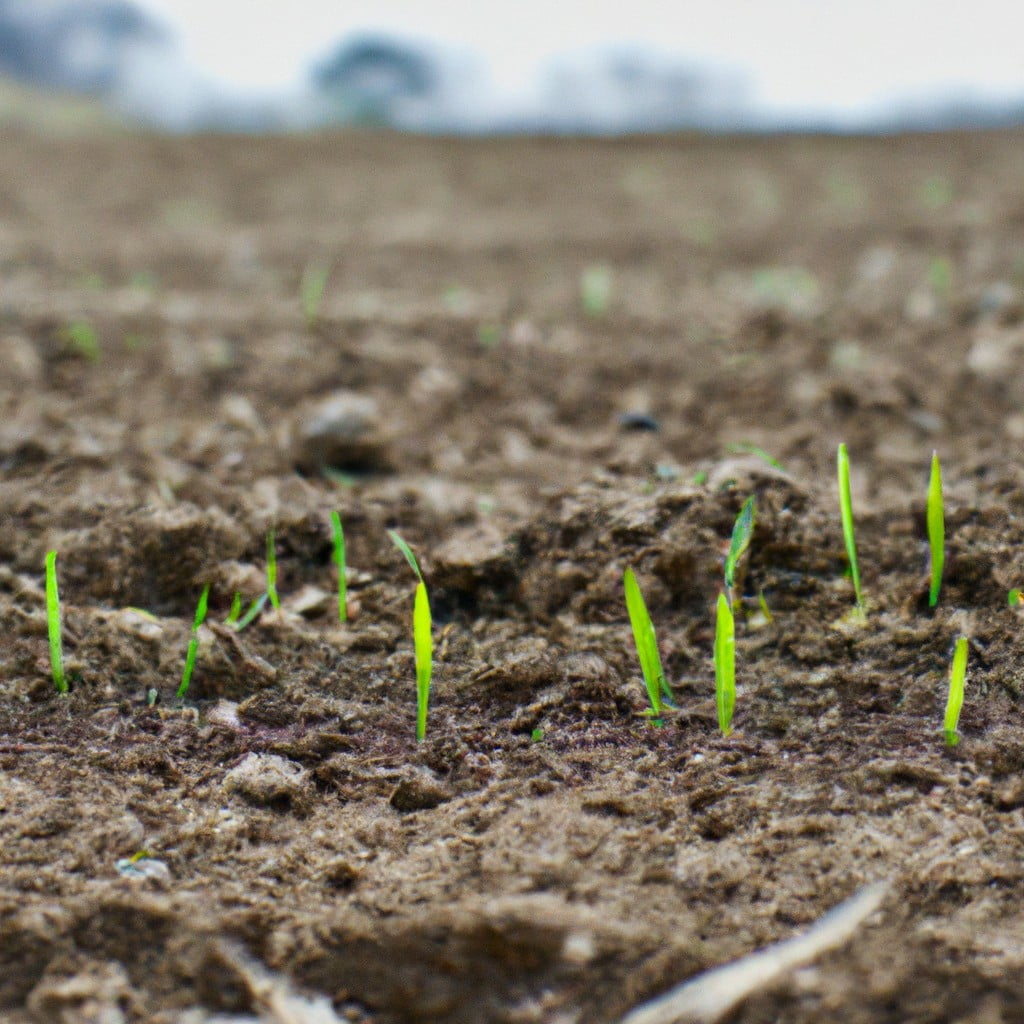Exploring regenerative farming, this article delves into its methods and benefits with a particular focus on how it can significantly increase food yield.
Regenerative farming, an innovative approach to agriculture, can significantly increase food yield by improving soil health, enhancing biodiversity, and boosting ecosystem resilience.
By prioritizing practices like cover cropping, crop rotation, and conservation tillage, this method not only restores degraded soil but also boosts its fertility, leading to higher crop yields.
This article will delve into the mechanisms behind these benefits, providing a comprehensive understanding of how regenerative farming can help us achieve sustainable food production.
Stay with us to explore the fascinating details of this transformative agricultural practice.
Key takeaways:
- Regenerative farming increases food yield by improving soil health.
- Practices like cover cropping and crop rotation restore degraded soil.
- Regenerative farming enhances biodiversity and boosts ecosystem resilience.
- By prioritizing soil health, regenerative farming promotes higher crop yields.
- Crop diversity in regenerative farming reduces vulnerability and increases production.
Look Inside:
Definition of Regenerative Farming

Regenerative farming is a holistic, principle-based approach to agriculture that seeks to restore degraded soil, increase biodiversity, and enhance ecosystems. It aims to transform unproductive land into thriving landscapes teeming with life.
This approach surpasses the “do no harm” philosophy of sustainable farming. Instead, it actively works towards improving the environment by rejuvenating the soil, maximizing water efficiency, and utilizing sustainable practices, contributing to the fight against climate change and food insecurity.
Principles of Regenerative Farming
There’s a set of core tenets which help govern the practice of regenerative agriculture.
Firstly, this method is deeply rooted in the enhancement of soil fertility. It achieves this through organic composting, enabling the soil to hold more carbon and water.
The second principle pertains to biodiversity, encouraging the diversification of crops and livestock to create a balanced ecosystem that can naturally ward off pests and diseases.
Thirdly, regenerative farming is focused on keeping the soil covered at all times to prevent erosion, hence the adoption of cover crops and no-till farming.
Lastly, it emphasizes on the cycles of growth and decay, promoting practices that follow the natural rhythms of the Earth to create a lasting and self-sustaining agricultural system.
By adhering to these principles, farmers can tap into the unparalleled benefits of regenerative farming, including significant increases in food yield.
Specific Techniques in Regenerative Agriculture
Several methods embody the principles of this farming approach. Cover cropping involves planting specific types of vegetation between commercial harvests to shield the soil from erosion and improve soil health.
Meanwhile, crop rotation, or changing the type of crop grown in a particular area each year, prevents pest build-up and promotes nutrient cycling in the soil.
Conservation tillage, on the other hand, minimizes soil disturbance, preserving its structure and reducing erosion. Moreover, incorporating livestock into crop farming systems can enhance nutrient cycling further, as animal waste provides a potent and natural fertilizer.
Lastly, agroforestry combines trees with crop and/or livestock systems, contributing to biodiversity and providing additional income sources for farmers through sustainable timber or fruit production. By implementing these practices, farmers can rejuvenate their lands, increase crop yields, and stimulate long-term agricultural sustainability.
Regenerative Farming and Soil Health
Bolstering soil health stands at the crux of this revolutionary farming method. This is primarily achieved by enhancing the soil’s organic matter content, a key driver of fertility. Organic matter provides vital nutrients for crops and increases the soil’s ability to retain water, a crucial factor in areas prone to drought.
Further enhancing the soil’s health is the increased biological activity under the regenerative approach. The practices followed in regenerative farming encourage the growth of beneficial microorganisms. Microorganisms aid in the decomposition of organic matter, making nutrients available to plants, and form symbiotic relationships with plant roots, thereby facilitating nutrient uptake.
Additionally, regenerative practices reduce soil erosion, a critical issue facing traditional agriculture. Techniques such as cover cropping and reduced tillage keep the soil in place, preventing nutrient loss and ensuring continued productivity from year to year. Thus, by focusing on soil health, regenerative farming creates a basis for sustainable, increased food yield.
Prioritize Soil Health
Creating a thriving ecosystem beneath the ground is essential. Through the incorporation of organic matter such as crop residues and compost, the structure of the soil can be significantly improved. Enhanced soil structure increases its capacity to retain water and nutrients, reducing dependency on synthetic fertilizers.
Furthermore, cultivating diverse crops contributes to a robust soil microbe community, fostering a nutrient-rich environment ideal for growth. These strategies not only allow farmers to maintain a healthy soil but also promote improved crop yield and resilience in the face of challenging weather conditions.
Thus, prioritizing soil health embodies the essence of regenerative farming, achieving a symbiotic relationship between cultivation practices and nature.
Crop Diversity in Regenerative Farming
One oft-overlooked ally in bolstering and stabilizing food yield is plant diversity itself. Advantageous to both the ecosystem and the farmer, integrating different plant types into the crop rotation enhances biodiversity, feeding soils with a wide array of nutrients.
An assortment of crops also reduces vulnerability to pests, diseases, and weather fluctuations, each species responding differently to these potential threats. Thus, diversification simultaneously incites an increase in soil fertility, resilience against threats, and ultimately contributes to a steady, higher production output.
This approach turns the concept of monoculture farming on its head, proving that diversity is strength, even within a field.
Food Yield Increase: Key Benefits of Regenerative Farming
Implementing practices centered on soil health, such as minimizing tillage and using organic fertilizers, is instrumental in increasing fertility and reducing soil erosion. This, in turn, allows for a more nutrient-rich soil capable of supporting diverse and abundant plant life.
Furthermore, the principle of crop diversity in regenerative farming contributes to pest and disease control, reducing the need for harmful pesticides and ensuring healthier plants. More robust crops equate to higher yields and less crop loss.
Overall, these regenerative farming practices provide a sustainable method to enhance crop yield, resulting in higher food productivity to meet the increasing demand. A synergistic effect is formed, where soil health, crop diversity, and ecosystem resilience amplify one another, culminating in significantly boosted food production.
Contrasting Regenerative Farming With Conventional Farming
Today’s predominant farming approaches largely depend on intensive tillage, mono-cropping, and excessive use of synthetic fertilizers and pesticides. Largely driven by immediate productivity and profitability, these practices gradually degrade soil health, constraining its long-term fertility and yield potential.
On the contrary, regenerative farming emphasizes the conservation of soil health and biodiversity. Its practices, such as no-till farming, crop rotation, use of organic compost, and cover cropping, work synchronously to revitalize soil biodiversity. By rejuvenating the soil’s natural ability to retain nutrients and water, these practices ultimately enhance its capability to support crop growth, thus increasing yield.
Therefore, the key differential factor between these two farming methods lies in their approach towards soil: while conventional farming is exploitative, regenerative farming is restorative and protective.
Case Studies: Regenerative Farming and Food Production
One compelling illustration of regenerative farming’s impact on food production is seen in North Dakota, where the implementation of no-till practices, diverse cover crops, and rotational grazing resulted in a 15–25% increase in crop yields.
Furthermore, The Rodale Institute’s long-term trials consistently show organic regenerative systems producing comparable yields to conventional systems, but significantly outperforming them in years of environmental stress.
Paired with an increase in soil health leading to greater resilience against drought, these examples highlight the tangible benefits of regenerative farming on food production.
Future of Food Security: Regenerative Farming
Adopting regenerative farming practices plays a crucial role in securing our future food needs. It enhances soil fertility, biodiversity, and ecosystem resilience, creating a farming system that can withstand climate change and other environmental challenges.
By increasing the organic matter in soil and promoting soil biodiversity, farms can produce more and healthier crops over time, even under challenging conditions. More importantly, by using less synthetic inputs, regenerative farming reduces our reliance on external inputs that can be disrupted by economic or geopolitical instability.
In addition, regenerative farming can play a significant role in mitigating the impacts of climate change. Agriculture is responsible for around a quarter of global greenhouse gas emissions, largely due to the release of carbon dioxide from soil disturbance and methane from livestock. By sequestering more carbon in the soil, regenerative farming can help reduce these emissions, contributing to global efforts to curb climate change.
In an increasingly unpredictable world, the adoption of regenerative farming practices offers a profound solution to food security while aligning with global sustainability goals. The potential to increase food yield, better withstand environmental challenges, and contribute to climate change mitigation underpins the promise of regenerative farming for our future food security.
FAQ
What are the benefits of regenerative farming?
Regenerative farming benefits include promoting healthy soil capable of yielding high-quality, nutrient-dense crops, enhancing land quality, fostering productive farms, and facilitating healthy communities and economies.
Could regenerative agriculture increase the nutritional quality of our food?
Yes, regenerative agriculture can enhance the nutritional quality of our food by facilitating a diverse mix of bacteria and fungi in the soil, which is shown to increase nutrient density.
What is the relationship between regenerative agriculture nutrition and food security?
Regenerative agriculture fosters food security by rejuvenating soil health, enhancing organic matter and biodiversity, and diminishing atmospheric carbon, thereby directly influencing nutritional quality and availability.
How does regenerative agriculture return nutrients to the soil?
Regenerative agriculture revitalizes soil nutrients through the implementation of techniques like the use of cover crops, crop rotation, composting, mulching, and animal manure, all aimed at restoring and bolstering the plant-soil microbiome to facilitate the circulation of requisite soil nutrients.
How do practices in regenerative farming contribute to biodiversity and increased farm output?
Regenerative farming practices contribute to biodiversity and increased farm output by restoring soil health, improving water retention and crop resilience, and promoting diverse ecosystems that support beneficial insects and wildlife.
What are some case studies where regenerative farming significantly improved crop yield?
The Rodale Institute’s Farming Systems Trial, often cited, reported a 30% increase in corn yield over conventional farming during years of drought, while Kiss the Ground in California documented a 50-100% increase in yield from regenerative practices.
How does regenerative agriculture combat soil degradation and promote enhanced growth for food crops?
Regenerative agriculture combat soil degradation and promote enhanced growth for food crops by employing practices such as crop rotation, cover cropping, and reduced tillage, which restore soil health, sequester carbon, improve biodiversity, and boost moisture retention, leading to more resilient, productive lands.




